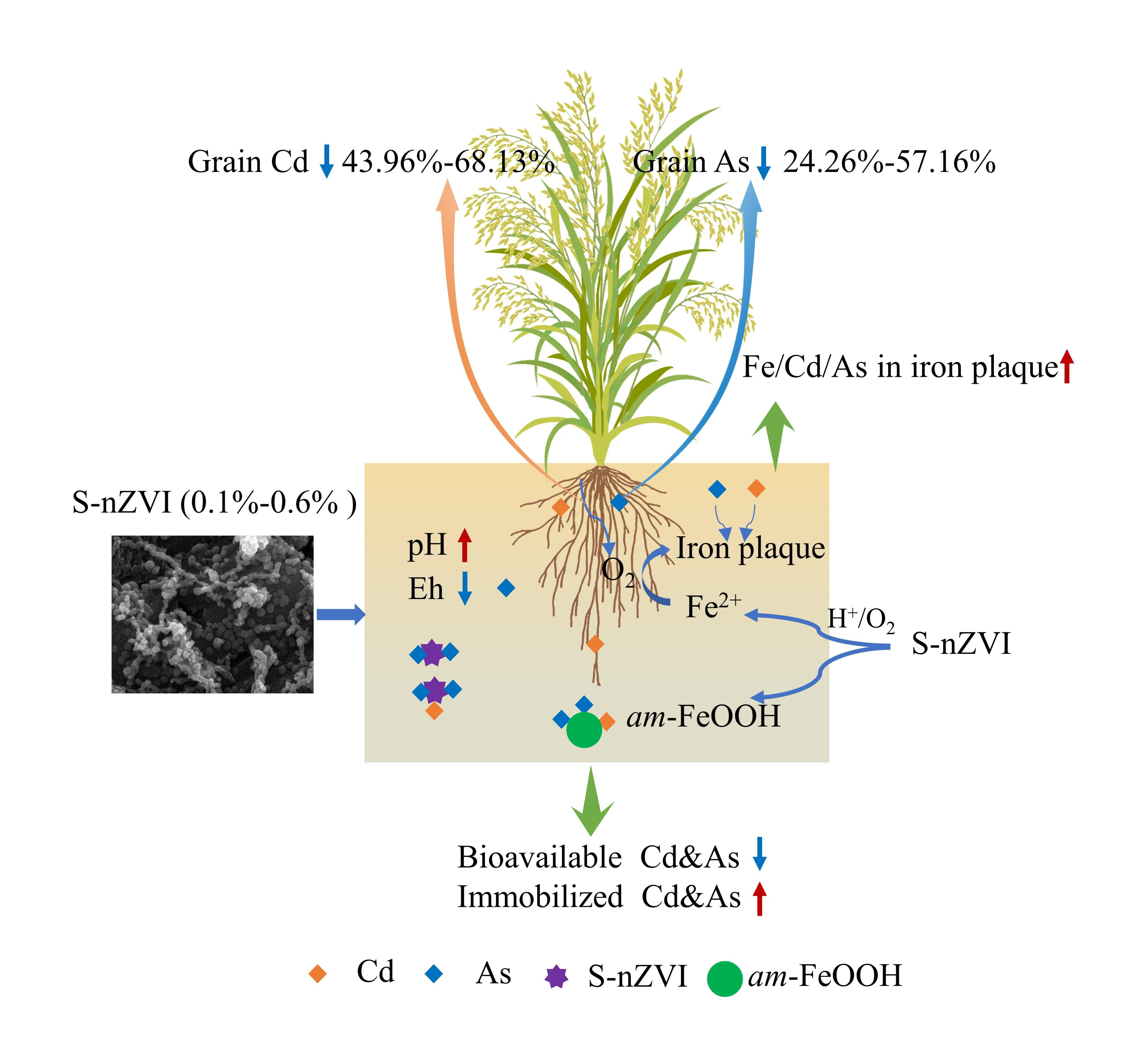Recently, the Remediation of Degraded and Contaminated Farmland Team from Institute of Environment and Sustainable Development in Agriculture, Chinese Academy of Agricultural Sciences revealed that the synthesized sepiolite-supported nanoscale zero-valent iron (S-nZVI) has the potential to be an effective material for remediating Cd&As co-contaminated paddy soil and alleviating Cd&As accumulation in rice. The related research findings have been published in the Environmental Technology & Innovation.

Scheme of the Cd&As mitigation in rice grain and paddy soil by S-nZVI
The findings reveal that the Cd&As concentrations in rice grains were reduced by 46.18%-68.13% and 24.26%-57.16%, respectively, under 0.1%-0.6% S-nZVI application. S-nZVI significantly decreased Cd&As concentrations in pore water and transformed Cd&As chemical speciation to immobile fractions, reducing the Cd&As availability to rice. Moreover, S-nZVI facilitated iron plaque formation and Cd&As sequestration in iron plaques, inhibiting the absorption of Cd&As by rice roots. In addition, moderate amounts of S-nZVI (0.1%-0.2%) increased soil pH and alleviated soil acidification. These findings suggest S-nZVI has the potential to be an effective material for remediating Cd&As co-contaminated paddy soil and alleviating Cd&As accumulation in rice.
This work was supported by National Natural Science Foundation of China, Jiangxi Provincial Key Research and Development Program and the Science Innovation Project of the Chinese Academy of Agricultural Science.
The DOI Link of the original text: https://www.sciencedirect.com/science/article/pii/S2352186424000166

